Siding Cleaning Near Me
Siding Cleaning Near Me
Siding Cleaning Near Me: How to Clean Vinyl Siding.
Vinyl siding has been the most popular exterior siding choice in the U.S. since 1995, and for good reason. Durable, versatile, affordable, and resilient, you can keep your vinyl siding looking great for years to come with basic routine care and siding cleaning near me. It doesn’t rot, it isn’t difficult to clean and maintain, and it’s a sustainable material, making it the preferred siding choice for environmentally-conscious homeowners. Vinyl is also an attractive option that complements most architectural styles.
However, like anything exposed to the elements, vinyl siding can get dirty and grimy. Your home’s exterior can also accumulate cobwebs, dust, and bird droppings. If your vinyl siding is looking a little worse for wear, you can rejuvenate it by giving it a thorough cleaning.
Take a walk around your house. Do you see green spots or tiny black dots on your vinyl siding? Dirt, mold, and algae all build up and grow on houses over time. There are two main options to restore your vinyl siding to its former glory: pressure washing and scrubbing by hand.
Cleaning vinyl siding can be a quick and easy task if you keep a semi-regular maintenance schedule.
Pressure Washing Vinyl Siding
If your house is big, or you are just eager to get the job done quickly, pressure washing your vinyl siding is a good option. Before you start, check your manufacturer’s recommendations. Some vinyl siding manufacturers won’t honor a warranty if a homeowner uses a pressure washer as too much pressure can damage vinyl. If you are concerned about your warranty, contact the manufacturer.
When you are ready to pressure wash, keep the following tips in mind:
- Don’t Use Too Much Pressure – Pressure washing your vinyl siding isn’t like hosing down your concrete driveway. The highest setting is probably too much pressure for the vinyl. If you spray too forcefully, you can bend and warp the vinyl. Extreme pressure can even crack the vinyl.
- Use a Mild Cleaning Solution – Avoid harsh chemicals or cleaning products. The best vinyl siding cleaner is an all-natural mixture of products you probably already have on hand.
- Keep the Stream at Eye Level – Hold the wand at your eye level. Avoid spraying at an angle as this can force water between and behind the siding, which can cause mold to form.
Whether you are pressure washing or cleaning by hand, you can make your own vinyl siding cleaner at home. Just follow the steps below for an easy, chemical-free cleaning solution that will make your home sparkle and shine.
Cleaning Vinyl Siding by Hand
If you don’t have a pressure washer for your siding cleaning near me, don’t worry! It is possible to clean vinyl siding with nothing more than a brush, a bucket of water, and a little bit of elbow grease.
The best vinyl siding cleaner contains no harsh chemicals and no solvents. And the good news is you can make your own cleaning solution from household items you probably already have in your pantry.
To do a gentle, effective DIY vinyl siding cleaning, do the following:
- In one bucket, combine four tablespoons of liquid detergent (make sure it is oil-free) and eight tablespoons of baking soda. Stir until the baking soda is dissolved.
- Add two cups of warm water to the detergent and baking soda mixture. Stir gently to avoid forming bubbles.
- Add four tablespoons of vinegar. Mix thoroughly.
You can use this cleaning solution with a power washer, or by simply wiping it on your vinyl with a soft, damp towel. Rinse with warm water to remove any residue.
If you are cleaning your vinyl by hand, avoid using a scrub brush, Brillo pad, or any stiff-bristled brush that could scratch or tear your vinyl siding.
Common Reasons for Siding Discoloration
You probably have no desire to conduct an in-depth analysis of the gunk you are washing off your siding, but it can be helpful to know what caused the discolorations in the first place. While most causes are harmless and their effects merely cosmetic, there are a few that may suggest a more serious underlying issue that shouldn’t be ignored.
1) Mold and Mildew
Mold and mildew are both types of fungi. Mildew is usually powdery or fluffy and can be gray, white, or yellow. Mildew can also darken to brown over time. Mold tends to grow in fuzzy or slimy patches that may be bright red, dark green, or black.
Airborne mildew spores can cause sore throats, coughing, and headaches for some, but it is considered a minor respiratory irritant. Mold, on the other hand, can cause much more severe health issues. And unlike mildew, mold growth can cause structural damage if left unchecked.
If you notice what you think might be mold during your vinyl siding cleaning near me, you may want to do a walk-around inspection of your home’s exterior, including the windows and roofline.
Keep an eye out for mold growing along the bottom edge of the siding panels. It is a common warning sign of additional growth underneath. And when mold gets behind siding, it can spread to support structures and eventually to the interior of your house.
2) Algae
Algae is one of the most common causes of vinyl staining. It is more pervasive in damp climates, but unless you live in an extremely dry environment, you almost certainly have at least some algae growth on your roof or siding.
Depending on the variety of algae, discolorations can be green, black, brown, and russet. Algae growth will do no structural damage, but if left unchecked it can permanently stain the lighter-colored siding.
3) Pollen
If you live in an area with a lot of trees, you are already well familiar with the springtime ritual of washing the pollen off your car. The yellow powder can coat just about every exposed surface, including your home’s exterior walls.
Although it may be a source of misery for allergy sufferers, it cannot damage your siding. But that does not mean it is harmless. Pollen grains can be a food source for mold, encouraging its spread.
Thankfully, vinyl does not absorb pollen stains the way wood or stucco can, so it is easy to rinse away.
Maintenance Tips for Your Vinyl Siding
Vinyl siding is still the most popular siding option in the United States for good reason. It comes in a variety of colors and styles, is quite durable, and requires very low maintenance. But even this convenient and popular siding option needs some periodic maintenance. Regular care can make a big difference in how nice vinyl siding looks, and how long it lasts.
1) Clean Your Siding Regularly
Cleaning your siding every six months to a year will keep it looking newer and lasting longer. The good news is, vinyl is easy to clean with a soft bristle brush and mild soap. Gently scrub the siding, then rinse the area with water from your regular garden hose.
You can also use a pressure washer on your home’s siding but take extra precautions when doing so. Make sure you have read the instructions for your specific pressure washer model, and spray at a 90-degree angle, so you do not force water up between the vinyl slabs.
2) Avoid Harsh Chemicals
While regular siding cleaning near me is essential, some chemicals can damage the vinyl material. Solutions to avoid include undiluted bleach, liquid grease remover, and furniture cleaning agents.
Abrasive scrubbers such as steel wool should also be kept away from vinyl. Both items can damage the surface, fading the color, and reducing the water-repelling qualities.
3) Spot Mold and Mildew
If you find mold, take the time to clean it now before it gets any worse. Just as with regular cleaning, do not use chemical cleaners. Choose a cleaner specifically for vinyl or make your own with a mix of 1 cup of vinegar with 1 gallon of water. However, if you notice dry rot or holes when inspecting for mold, then it is time to replace your siding.
4) Avoid Painting Vinyl
Technically, your siding can be painted by a professional. However, many manufacturers will void the warranty if vinyl siding is painted. And worse, even if the siding is painted correctly, it can warp or become damaged.
If you decide to paint your vinyl siding, make sure a professional painter thoroughly cleans and primes it, then use a vinyl-safe acrylic paint. However, if you really want to freshen up your home’s exterior with a new color, replacing your siding with new vinyl is usually a better idea.
5) Repair Cracks and Holes Quickly
If your siding has gaps or cracks, it could let moisture into the walls and affect your home’s ability to control the temperature. When moisture penetration goes untreated, it eventually causes mold and rot, which could even damage the structural integrity of your home.
Call a professional to repair the damaged siding panels now to avoid a more intensive, and expensive, project.
6) Keep the Grill Away
Vinyl is durable to the elements, but it can’t withstand the heat from an open flame. Many homeowners will place grills up against the side of their houses for convenience. But grills in use should be kept at least 10 feet away to avoid melting and warping vinyl siding.
Additionally, keep your grill on a stone or brick surface. This safety measure will avoid catching fire to grass or shrubs, which could also damage your siding, or worse cause a full-blown house fire.
Is It Time to Replace Your Vinyl Siding?
If you see any signs that your siding is worn – such as warping, cracking, excessive mold, or dry rot – during your cleaning this year, it may be time for a siding replacement. While vinyl siding is straightforward to clean, it should be replaced if it has faded or damaged.
Siding is designed to safeguard your home against the elements. If your siding is cracked or rotting, moisture can enter your home. Water can find its way into even the tiniest spaces, including gaps in siding.
If your siding is damaged or well past its prime, replacing it with energy-efficient siding can protect your home from moisture damage, boost your property value, and give your home a brand-new look.
Today’s vinyl siding offers all the appeal of wood siding without maintenance worries, rotting, splitting, or insect damage. Unlike other exterior cladding, vinyl siding only requires periodic cleaning with mild soap and water from a garden hose. To keep your vinyl siding looking good, clean it once a year or so.
It is critical that you hire a professional to pressure wash your siding. If you attempt to clean vinyl siding with the wrong detergent or too much water pressure, you could do more harm than good.
Water could seep into vents and cause wood rot between the siding and the house. Excessive pressure could even blow a hole through the siding! Pressure washers can be difficult and dangerous equipment, and it is best to hire a professional for your vinyl siding cleaning near me than to risk damaging your siding and needing a home renovation.
Siding Cleaning Near Me
If you need a professional siding cleaning service, contact RPW ProWash today. Please feel free to call us now at (779) 348-3135 or contact us online to schedule your service or ask for a FREE, no-obligation quote.

cleaning the wall (vinyl siding) high pressure cleaner
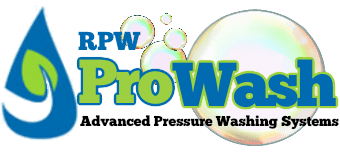
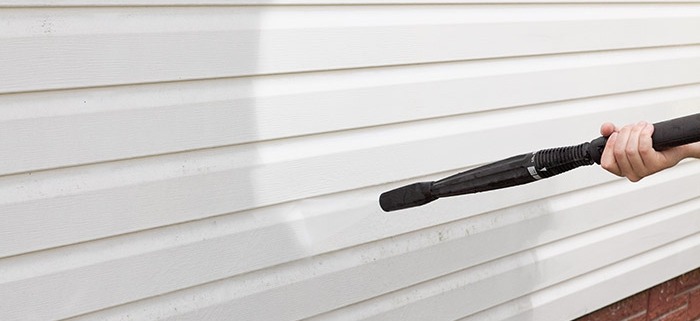
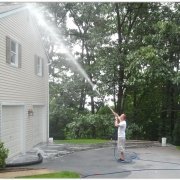
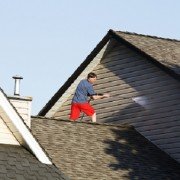

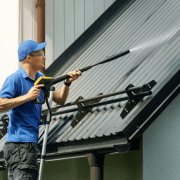


Leave a Reply
Want to join the discussion?Feel free to contribute!